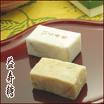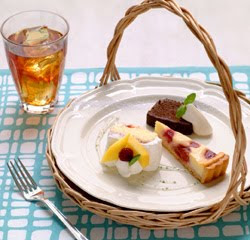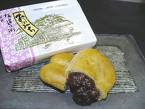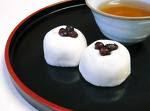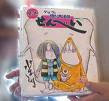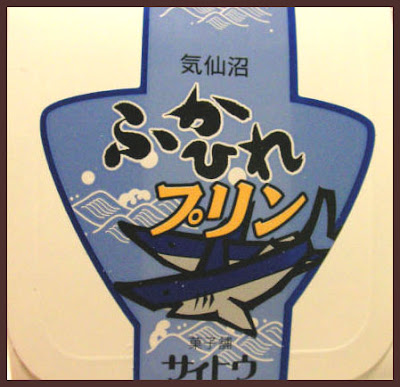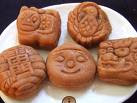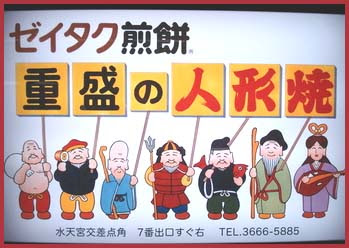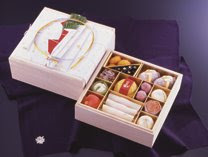::::::::::::::::::::::::::::::::::::::::::::::::::::::::::::::::::::::::::::::::::::::::::::::::::::
Sweets from Shikoku
Tokushima 徳島
Naruto Kintoki satsuma imo 鳴門金時 サツマイモ
Cheese cake with sweet potatoes
also
uzu imoyookan うず芋羊羹 yookan from sweet potatoes
goma imoyookan ごま芋羊羹
yokan from sweet potatoes with sesame
. . . CLICK here for Photos !
:::::::::::::::::::::::::::::::::::::::::::::::::::::::::::::::::::::::::::::::::::::::::::::::::::::
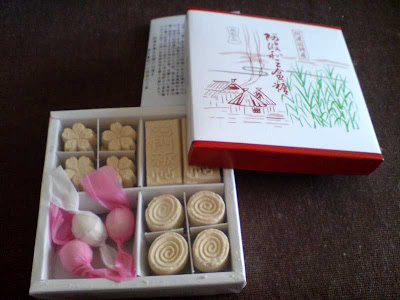
wasanbon 和三盆 refined sugar from Awa no Kuni, Tokushima, Kamiita-cho in Itano and the Asan mountains.
四国・徳島 阿波和三盆糖 Since about 1775.
It is also produced in Kagawa prefecture.
Sanuki Wasanbon 讃岐和三盆
. . . CLICK here for products with Sanuki Wasanbon !
wasanbontoo, wasambontoo, wasanbontoh 和三盆糖 Japanese Wasanbon sugar
During the Edo period, brown sugar (kurosato, "black sugar" 黒砂糖) was made from cane grown in the Southern Islands of Okinawa. The 8. Shoogun Tokugawa Yoshimune (1684-1751) encouraged other areas to try and grow sugar cane, so the two provinces in the north of Shikoku island tried it out, first Takamatsu han, then Tokushima han. They could grow it but did not know how to make refined sugar out of it. So Maruyama Tokuya, a young man, gathered secret knowledge of sugar refinement in Hyuga (now Miyazaki, Kyushu) and succeeded with it in about 1800.
Since then refined sugar WASANBON became a speciality of Kagawa and Tokushima.
In the language of the island, a variety called "bamboo sugar, chikutoo 竹糖" ( or 竹蔗(ちくしゃ)chikusha or "thin cane" hosokibi. Saccharum sinense Roxb, Chinsese sugar cane) is grown until it is about 2 meters high. The stems are quite small like a man7s finger, but this is the sugar cane grown most northernly in the world, Saccharum officinarum. Some is planted in spring and harvested in winter, some is planted in summer and harvested in winter of the following year.
The processing of this sugar is all made by hand.
The sweet liquid is squeezed out in the "shimeba" maschines, formerly with the use of cows to provide the power. Shimeko are the people in charge of squeezing the cane.
Then the liquid is boiled to remove bitterness. first pot (aragama) and then fukashi for about 30 minutes. To remove sand and mud, the liquid is poored into a barrel (sumashi-oke). Then the pure liquid is boiled again (nakagama, agegama) and then finally to the hiyashigama to cool. The cool liquid starts to chrystalize, it is put into an earthen pot to cool more (hiyashikame). The liquid becomes slightly brown when cooling.This is the "one step before white sugar, coarse sugar" "shiroshitatoo 白下糖" and similar to brown sugar and called "kanmitsutoo 含蜜糖". Shiroshitatoo has to stand for a week before processing.
This "one step before" is layed on a tray, water is added and it is kneaded so the sugar chrystals get very fine, the sugar is polished "togi 研ぎ". Thus it retains its taste of cane sugar.
The polished sugar is put into a bag of hemp and put in a box called "squeezing ship", oshibune 押し舟, covered with heavy stones (aragake). Thus a brownish liquid is squeezed out. This process is repeated many times and finally the crystals are let to dry for one week.
Since the sugar is polished on a tray (bon) for three times (san), the name "wasanbon (Japanese three trays)" came into being. Lately, to get more whitish sugar, it is polished for 5 times or more. It has to be dried in the shade on the same day. It absorbs humidity very fast and can start to grow mold.
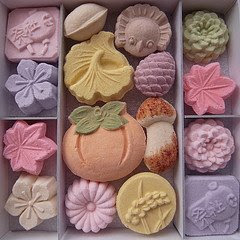
This sugar is close to powder sugar 粉砂糖 and very sweet. It became the base of the high quality Japanese tea sweets. Eaten just like this it is called "dried sugar sweet" higashi 干菓子(ひがし)/ 乾菓子(ひがし), as opposed to "raw sweets" namagashi 生菓子.
The best known are little sweets pressed in molds (uchimono 打ちもの), similar to the rakugan sweets. Two little pieces are wrapped in a piece of washi paper, the ends twisted like a shuttlecock (Federball), so they could easily be put in the breast pocket of a kimono and carried around.
. . . CLICK here for "uchimono" Photos !
Wasanbon can only be made in the cold dry months of winter. It is harvested in December and has to be processed by February. So many sweets factories now use a different unrefined sugar, sotoo 粗糖(そとう. Rohzucker), one step before becoming wasanbon sugar, which is slightly golden in color.
wasanbon tasts a bit like butter and honey and is quite creamy. The sugar is now also used for other sweets, like roll cake and pudding.
Wasanbon was widely used in all of Japan before the war, but after WWII, cheap sugar was imported.
Sanbon shiro is a word used for white refined sugar from other parts of the world. Wasanbon is made in Kagawa (Sanuki Sanpaku 讃岐三白(さぬきさんぱく)) and in Tokushima (Awa Wasanbontoo)
arare koboshi 霰(あられ)こぼし from rock sugar
gofuku senshoo 五福仙掌(ごふくせんしょう)
shoochikubai 松竹梅 Pine, Bamboo and Plum
source : www.kumoii.com

Wasanbon Sesame Mochi "Rakanmochi" 羅漢餅
Other types of dried sweets
干菓子(ひがし)higashi
落雁 rakugan
雲平 unpei
有平糖 (アルヘイとう、ありへいとう)ariheitoo
金平糖 konpeitoo
金華糖 (きんかとう)kinkatoo
生姜糖 (しょうがとう)shoogatoo / Izumo region
煎餅 (せんべい)senbei
八ツ橋 yatsuhashi sweets
おこし okoshi sweets
甘納豆 amanatto beans with caramel coating
五色豆 goshikimame, beans with five colors of sugaring: white, yellow, red, brown, green 白、黄、赤、茶、青.
quote
Kompeito,
also spelled as konpeito (Japanese: 金平糖, 金米糖, or 金餅糖 in Kanji, or こんぺいとう, コンペイトー in kana, konpeitō) is a Japanese candy.
The word "konpeito" comes from the Portuguese word confeito, which means a sugar candy. This technique for producing candy was introduced to Japan in the early 16th century by Portuguese traders. The infrastructure and refining technology of sugar had not yet been established in Japan in those days. As konpeito uses a lot of sugar, it was very rare and expensive as a result. In 1569, Luís Fróis, a Portuguese missionary, presented a flask of konpeito to Oda Nobunaga in order to obtain the permit for mission work of Christianity.
In Meiji period, konpeito had already been culturally-prescribed as one of the standards of Japanese sweets - the character Sugar Plum Fairy in the Nutcracker was translated into konpeito no sei (Japanese: 金平糖の精, Fairy of konpeito). Konpeito is also the standard of the thank-you-for-coming gift which is given by the Imperial House of Japan. The gift of konpeito comes in a small box called
bonbonieru (Japanese: ぼンぼニエール), from the French bonbonnière, meaning candy box.
© More in the WIKIPEDIA !
.................................................................................

rakugan sweets
Mugi rakugan 麦落雁 (むぎらくがん)
Dried sugared cakes with barley
rakugan are hard, dainty sweets made of soybean and rice flour mixed with sugar. They can be pressed in beautiful small molds to get seasonal patterns.
kigo for summer
More sweets from Fukuya Awa Sweet store:
月あかり, あい舟, 文化の森, 遊菓人, 二十五万石, 藍楽, gofuku imo 五福芋, 雲井.
source : www.kumoii.com
Read more : Okada Sugar Manufacture
From my photo album
CLICK for enlargement
Wasanbon Stick sweets with powder of black beans
黒豆きなこ入り
:::::::::::::::::::::::::::::::::::::::::::::::::::::::::::::::::::::::::::::::::::::::::::::::::::::
yookan ようかん
Made in the southern parts.
made from mochigome and rice flour mixed together, kneaded with hot water, put in a wooden form to give it a figure. Color is added.
餅菓子
:::::::::::::::::::::::::::::::::::::::::::::::::::::::::::::::::::::::::::::::::::::::::::::::::::
Kochi / Tosa 高知
ichigo keeki イチゴ ケーキ cake with strawberries
Koochi aisu 高知アイス 南国土佐のアイス /
shaabetto シャーベット sherbet ice cream
made with local citrus fruit 土佐文旦、小夏、ゆず、ぽんかん、みかんの
. . . CLICK here for Photos !
also made from soybean milk with vanilla flavor, black sesame and freshly cooked rice.
豆乳バニラアイス / 豆乳黒ごまアイス / 炊きたてお米アイス
:::::::::::::::::::::::::::::::::::::::::::::::::::::::::::::::::::::::::::::::::::::::::::::::::::
Ehime / Iyo 愛媛
Hakata no shio sofuto kuriimu 伯方の塩ソフトクリーム
soft icecream with salt from Hakata, also normal icecream
Big chunks of salt are sprinkled on the ice. A waffle in the form of a heart is added for easier eating.. . . CLICK here for Photos !
Hakata no Shio, Daifuku 伯方の塩 純生大福
Manju with sweet tsubu an red bean paste paste. The outside is made with salt. Sold in Matsuyama
. . . CLICK here for Photos !
Matsuyama Botchan Dango
shigure しぐれ(お菓子)志ぐれ square sweets "winter rain"
愛媛県大洲市の特産, Oozu Town a kind of mochi
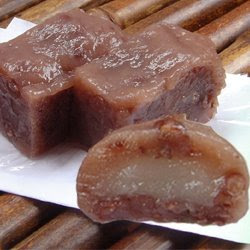
also shigure daifuku 志ぐれ大福 round shigrue sweets
from dango flower, azuki beans flower, sugar and some salt, put in a square box and steamed.
The red soy beans come from Hokkaido, cooked for 3 to 4 hours. Then mochigome,dango flower is added and all is steamed.
Prepared by the store Kiharu for more than 200 years.
taruto, タルト roll cake
..... mahoo no rooru keeki 魔法のロールケーキ
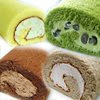
Roll made from wheat flour, eggs, sugar, trehalose, baking powder and fresh cream
With fresh cream and flavored with green powder tea, black sesame paste, chocolate and cheese. (抹茶、チョコレート、ゴマのペスト、チーズ)
The cheese flavor is favored by elderly people.
..... kuritaruto 栗タルト sweet roll with chestnuts
A kiji of castella cake with anko sweet bean paste rolled inside. In the anko pieces of sweet chestnuts are added.
another roll cake has yuzu flavor in the an.
Bisquitrolle.
:::::::::::::::::::::::::::::::::::::::::::::::::::::::::::::::::::::::::::::::::::::::::::::::::::
Kagawa 香川
Ishimatsu manjuu 石松まんじゅう
Manju in memory of Ishimatsu
at the shrine Kompirasan, Kotohira shrine, Konpira 金毘羅
. . . CLICK here for Photos !
Mori no Ishimatsu, on behalf of his oyabun boss Shimizu no Jirochoo came to Konpira. He prayed and was on his way back when he realized he had forgotten his sedge hat. When he returend, whow, it had turned into three delicious steamed buns (manjuu).
So even now they are sold in three pieces as a portion, all filled with sweet red bean paste.

Ishimatsu (right, with only one eye) and Jirochoo as Daruma Dolls
But this is a different story.
Jirochoo and Ishimatsu Daruma 次郎長だるま . 石松だるま
Oiri, yomeiri おいり 嫁入り sweets for the bride
from Marugame, Sanuki, Shikoku
oriibu chokoreeto オリーブチョコレート
Olives Chocolate, Olive chocolate !
from Shodoshima 小豆島
Shimahide Senbei 志ま秀せんべい えびせん
wasanbon sweets, see Tokushima above.
*****************************
Worldwide use
Süßigkeiten aus Shikoku
In Tokushima werden viele Süßkartoffeln angebaut und teilweise in Süßigkeiten verarbeitet, z. B. Käsekuchen oder Geleestücke (yookan) mit Süßkartoffeln und Sesamgeschmack.
In Koochi gibt es verschiedene Eissorten und Sorbets mit dem Geschmack der lokalen Zitrusfrüchte und Mandarinen. Eis wird auch aus Sojabohnenmilch gemacht oder mit schwarzem Sesam und sogar mit frisch gekochtem Reis vermischt.
Das Salz von Hakata soll im Sommer die Eiscreme „versüßen“, wie es der japanische Geschmack empfindet. Große Salzkristalle werden auf die Eiscreme gesprenkelt und alles mit einer Waffel in Herzform dekoriert.
Auch die normalen mit süßem Bohnenmus gefüllten Mochi (daifuku mochi) bekommen in Hakata einen Mochi-Teig mit mehr Salz als normal, entsprechend einer Tradition von mehr als 200 Jahren.
Matsuyama ist bekannt für die Biskuitrollen mit verschiedenen Geschmacksrichtungen, z. B. grüner Pulvertee, Sesampaste, Käse oder Schokolade. Manchmal kommt sogar noch etwas frisch gepresster Saft von Yuzu-Zitrusfrüchten in die Mischung. Der frische Käsegeschmack ist bei den älteren Kunden besonders beliebt.
Die Insel Shoodoshima in der Präfektur Kagawa ist bekannt für ihre Süßigkeiten mit einem Zusatz von Oliven, Oliven-Schokolade und Oliven-Pudding.
Manjuu-Küchlein in Erinnerung an Mori no Ishimatsu.
*****************************
Things found on the way

amanatto, sugar-glazed beans
三月の甘納豆のうふふふふ
sangatsu no amanattoo no ufufufufu
sugar-glazed beans
of March
u fu fu fu fu
Tsubouchi Nenten 坪内稔典
Amanatto and Haiku
ufufu ... imagine some old ladies eating sweets and giggeling "hehehe".
This haiku is very famous, but also very difficult to understand, even for Japanese. Maybe it is one of these "unfinished" ...
*****************************
HAIKU
葉桜や京より届く和三盆
hazakura ya Kyoo yori todoku wasanbon
cherry tree with leaves -
from Kyoto I receive
wasanbon sweets
source : Holly Garden
*****************************
Related words
***** WASHOKU : Regional Japanese Dishes
***** WAGASHI ... Sweets SAIJIKI
:::::::::::::::::::::::::::::::::::::::::::::::::::::::::::::::::::::::::::::::::::::::::::::::::::




